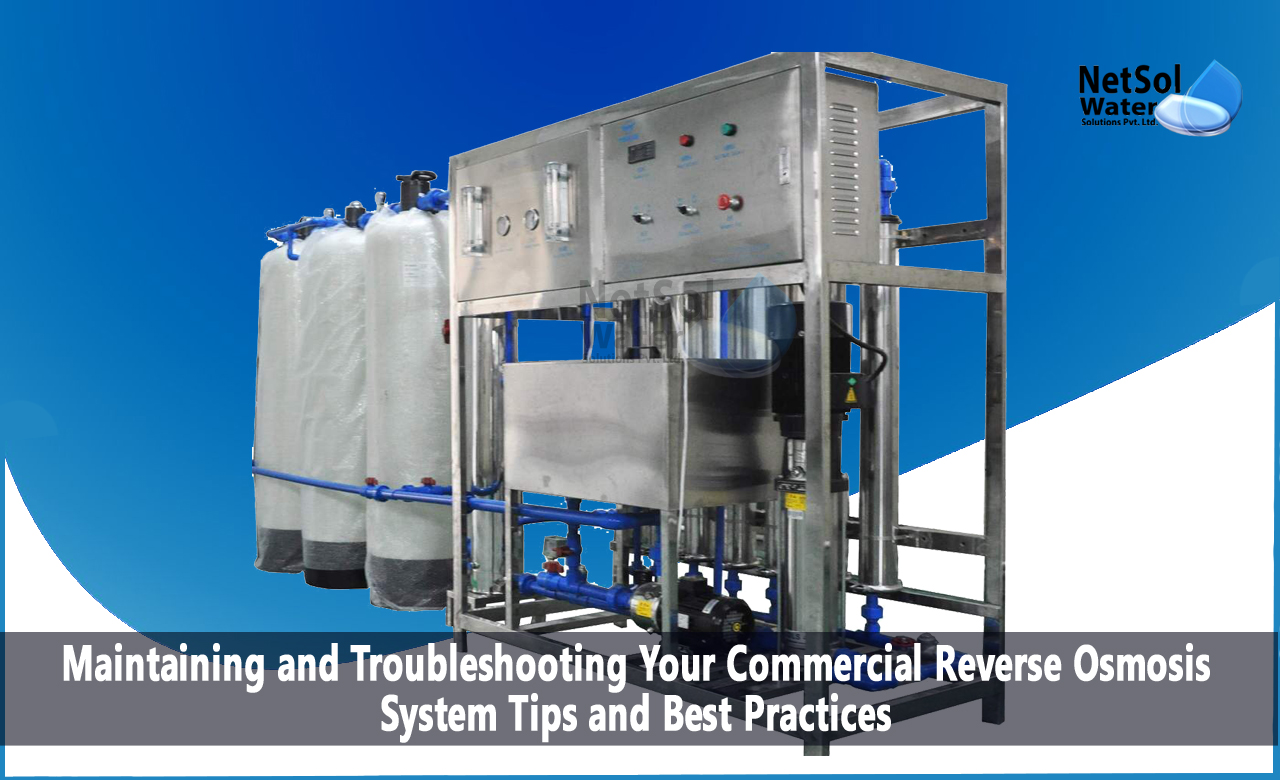Maintaining and Troubleshooting Your Commercial Reverse Osmosis System
Commercial Reverse Osmosis (RO) systems are used to produce clean and safe water for various applications, including drinking water, food and beverage production, and industrial processes. However, these systems require regular maintenance and troubleshooting to ensure they operate effectively and efficiently.
In this blog post, we will discuss tips and best practices for maintaining and troubleshooting your commercial RO system.
Maintenance Tips:
- Replace Filters Regularly: Filters play a critical role in removing impurities and contaminants from water. Regularly replacing filters, including sediment, activated carbon, and RO membranes, can ensure the system operates effectively and reduces the risk of damage to the system.
- Clean Membrane Elements: Over time, membrane elements can become fouled with organic matter and other impurities, reducing their effectiveness. Regular cleaning of the membrane elements, using specialized cleaning solutions and equipment, can improve the lifespan of the membranes and maintain system performance.
- Monitor Water Quality: Monitoring water quality regularly, including pH, conductivity, and total dissolved solids (TDS), can provide insights into the effectiveness of the system and identify issues before they become significant problems.
- Inspect Pumps and Motors: Regularly inspecting and maintaining pumps and motors can help identify issues with the system, such as leaks, unusual noises, and other mechanical issues.
Troubleshooting Tips:
- Low Water Production: Low water production can be caused by a variety of issues, including clogged filters, fouled membrane elements, or insufficient pressure. Identifying and addressing the root cause of the issue can help restore system performance.
- High Water Consumption: High water consumption can indicate issues with the RO membrane, including fouling or damage. Checking the membrane elements and monitoring water quality can help identify the root cause of the issue.
- High Pressure: High pressure can be caused by clogged filters, fouled membranes, or issues with the pump. Identifying and addressing the root cause of the issue can help prevent damage to the system.
- Low Pressure: Low pressure can indicate issues with the pump, membranes, or other components of the system. Inspecting and troubleshooting these components can help identify and resolve the issue.
Best Practices:
- Regularly Inspect and Maintain the System: Regular inspections and maintenance can help identify and address issues before they become significant problems, reducing downtime and repair costs.
- Document Maintenance Activities: Documenting maintenance activities, including filter replacements, membrane cleanings, and other maintenance tasks, can help track system performance and identify trends or issues that require attention.
- Train Personnel: Providing training to personnel responsible for operating and maintaining the RO system can ensure they understand best practices and can identify issues quickly and efficiently.
Conclusion:
Maintaining and troubleshooting a commercial RO system can be challenging, but implementing best practices and following regular maintenance and troubleshooting tips can help ensure the system operates effectively and efficiently. Regularly replacing filters, cleaning membrane elements, monitoring water quality, and inspecting pumps and motors can help prevent issues before they become significant problems. Additionally, documenting maintenance activities, providing personnel training, and addressing issues promptly can help ensure the system continues to provide clean and safe water for various applications.
If you are curious to know more, feel free to contact us at +91-9650608473 or enquiry@netsolwater.com



